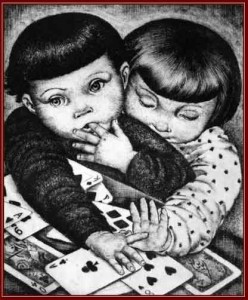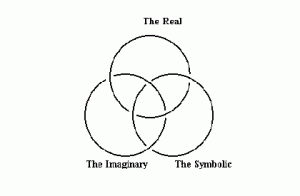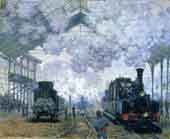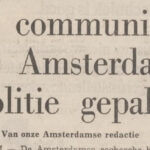Olamide Udoma ~ 10 Examples Of ‘Green’ Architecture In Africa
 We are all trying to go ‘green’: ‘green’ world, ‘green’ city, ‘green’ household.
We are all trying to go ‘green’: ‘green’ world, ‘green’ city, ‘green’ household.
‘Green’ has become a buzzword for sustainable, safe, energy efficient and/or economic. The Encyclopaedia Britannica describes green architecture as a ‘philosophy of architecture that advocates sustainable energy sources, the conservation of energy, the reuse and safety of building materials, and the siting of a building with consideration of its impact on the environment’. In the world of architecture we are all trying to go green but is this the same in Africa and if it is, how is it being manifested?
After doing some research, I have realised that ‘green’ architecture in Africa does not mean the same thing as it does in Europe or America.The reason for the difference is technology, cost, and governance. I would describe the so-called ‘green’ architecture in the African context as ‘feasible’; and a by-product of becoming ‘feasible’ is to become sustainable. Feasible or Sustainable architecture in Africa is finding new ways to cut costs, take lessons from traditional building methods, conserve energy, promote reuse and still remain relevant.
Read more: http://futurecapetown.com/the-move-to-green-architecture
Reconfiguring Apartheid Loss: Reading The Apartheid Archive Through A Lacanian Lens
Abstract.
This paper, the first of two focussed on the topic of libidinal attachments between white children and black domestic workers in narratives contributed to the Apartheid Archive Project (AAP), offers a series of methodological insights derived from a Lacanian type of psychoanalytic reading practice. A Lacanian reading practice is one which emphasizes the importance of symbolic juxtaposition, of recombining different facets of texts, and of attempting to locate what I term the “absent mediator” implied by tacit conjunctions and associations within texts. In this paper I focus particularly on a puzzling aspect shared by a series of contributions to the AAP, namely the role of animals in the narratives of white participants, which appear to emerge precisely when the question of a loving relation for a black person is posed. I argue that this narrative device is an attempt to make sense of a prospective relationship, particularly when such a relationship is effectively prohibited by the prevailing rules of interaction. In response to pressing questions of inter-racial loss and love, and in respect of an ambiguous inter-racial relationship, recourse to an animal provides a fantasmatic “solution”, a model of how to manage a relationship that otherwise difficult to understand.
Keywords: Absent mediators, Apartheid Archive, Lacan, psychoanalysis, racism
Introduction
One of the unintended consequences of apartheid’s massive injustices of social division and inequality was – paradoxically – the production of relations of racial proximity. This pinpoints one of apartheid’s internal contradictions: as its white beneficiaries came increasingly to rely on the domestic labour provided by an oppressed black population, so a series of intimate white spheres – the site of the home, and more particularly, the care of children – were effectively opened up to “inter-racial” contact. It is for this reason that, psychoanalytically, the literature discussing the relationship of white children and black – childminders (“nannies”) (Cock, 1980 & 2011; Motsei, 1990; Ally, 2009) is so crucial to an understanding of the libidinal economy of apartheid. This literature speaks to the presence of intimacy within structures of power, to the factor of affective attachments, sexual and familial alike, occurring across seemingly impassable divisions of race. Read more
Refuting Melancholia: Postures Of Melancholic Identification In The Apartheid Archive
 Abstract.
Abstract.
This paper, the second of two focussed on the libidinal attachments of white children to black domestic workers in narratives contributed to the Apartheid Archive Project (AAP), considers the applicability of the concept of social melancholia in the case of such “inter-racial” attachments. The paper questions both the psychoanalytic accuracy, and the psychic and political legitimacy of such an explanation (that is, the prospect of an “inter-racial” melancholic attachment of white subjects to black care-takers). By contrast to the political notion of ungrievable melancholic losses popularized by Judith Butler’s work, this paper develops a theory of compensatory symbolic identifications. Such a theory explains the apparent refusal of identification which white subjects exhibit towards black caretakers and it throws into perspective an important conceptual distinction regards loss. On the one hand there is the psychotic mechanism of melancholic attachment, which expresses absolute fidelity to a lost object, even to the point of self-destructive suffering. On the other, there is the neurotic mechanism of compensatory identification, in which the original object is jettisoned and a substitution found, such that a broader horizon of symbolic and ideological identification is enabled.
Introduction
The companion piece (see: Rozenberg Quarterly) to the current paper investigated a series of Apartheid Archive narratives via the means of psychoanalytic reading practice. That paper and this one share a similar aim: of shedding light on certain of apartheid’s “lost attachments”. The analytical undertaking of a mode of psychoanalytic discourse analysis is not, of course, a-theoretical, and at least one crucial facet of the texts considered – their ostensibly mournful as aspect – begs further conjecture. In supplementing the foregoing article then, I am shifting here from a focus on specific strategies of textual reading practice to a critical exploration of the usefulness of a key psychoanalytic concept in the illumination of these texts. The first of these two papers engaged with the “dathow one might psychoanalytically read the repression of libidinal attachments via certain absent mediators. The current paper comprises an extended theoretical development of psychoanalytically reading a political situation of loss and how this should be conceptualized. Read more
Social Housing Institutions Toolkit
 The Social Housing Regulatory Authority (the”SHRA”) was established in August 2010 by the Minister of Human Settlements in terms of the Social Housing Act, No. 16 of 2008. The SHRA is classified as a public entity in terms of Schedule 3A of the Public Finance Management Act.
The Social Housing Regulatory Authority (the”SHRA”) was established in August 2010 by the Minister of Human Settlements in terms of the Social Housing Act, No. 16 of 2008. The SHRA is classified as a public entity in terms of Schedule 3A of the Public Finance Management Act.
Mission:
The SHRA will regulate and invest to deliver affordable rental homes and renew communities.
Vision:
Affordable rental homes in integrated urban environments through sustainable institutions.
Functions:
Promote the development and awareness of social housing by providing an enabling environment for the growth and development of the social housing sector.
Provide advice and support to the Department of Human Settlements in its development of policy for the social housing sector and facilitate national social housing programmes
Provide best practice information and research on the status of the social housing sector
Support provincial governments with the approval of project applications by social housing institutions
Provide assistance, when requested, with the process of the designation of restructuring zones
Enter into agreements with provincial governments and the National Housing Finance Corporation to ensure the co-ordinated exercise of powers
Read more: http://www.shra.org.za/about-us/legislative-mandate
Neil Blackshaw – Whose City Is It Anyway? The Harsh Truth About Urbanisation
theguardian.com. April 16, 2014. We have, it seems, no difficulty in dealing with the idea of cities, historically or in day-to-day life across the world. Cities are often iconic and in many ways define national identity. On the whole, we like them.
We have much more difficulty coming to terms with urbanisation – the process by which cities grow and change. China has just announced its very first “urbanisation policy”, while India is aggressively pursuing the idea of “smart cities”. Neither takes full account of the reality faced by the overwhelming majority of citizens caught in this turmoil of urban growth. As a result, such grand strategies risk perpetuating the social exclusion, inequity and precariousness of urban life.
We might be fascinated by cities, but we tend to see them in dichotomous ways. On one hand, they are held to be the key to economic growth and increased prosperity. There is a well-established school of city utopianism as exemplified by what Harvard economist Ed Glaeser calls “the triumph of the cities”. This notion of world cities as nodes in a network of transnational flows of capital, people and ideas is central to the neoliberal agenda.
Read more: http://www.theguardian.com/whose-city-is-it-anyway
See also The Guardian Cities Section: http://www.theguardian.com/cities
The Guardian Cities website is supported by the Rockefeller Foundation. The site offers a forum for debate and the sharing of ideas about the future of cities across the world. All content is editorially independent
Gabriel Garcia Marquez 1927 – 2014
Terug naar Macondo – Het spook van Honderd jaar eenzaamheid en het inheemse innerlijk van de Mesties ~ Inhoudsopgave
 Bij dit boek
Bij dit boek
Kennersblik; Stem; Boek.
Achter de coulissen van Macondo
Over de oorsprong
Cuernavaca; Herinnering; Guajiros; Ten slotte
Over de roman
Begin; Revolte; Segundo; Storm; Ten slotte
Over de nesteling
Lenzen; Decodering; Voelen; Geheugen; Ten slotte
Over het theater
Wilsbeschikking; Soorten; Herinneringsruimten; Bewust; Schijnwerpers; Bundeling; Politiek; Ten slotte
Op de podia van Macondo
Melquíades en de geschiedenis
Tijdsgevoel; Dictaturen; Blikveld; Cambridge; Bevolkingsdruk; Ten slotte
José Arcadio Buendía en de schepping
Schepper; Wortels; Slang; Viering; Lichaam; Instellingen;Scheppingsverhalen; Ten slotte
Úrsula en de omwenteling
Opnieuw; Marianismo; Antecedenten; Breekijzerin; Guadalupe; Ten slotte
Bij twee hoofdrolspelers uit Macondo
Het aureool van de Kolonel
Ingewijd; Normatief; Thompson; Opstanden; Oorlogen; Gemeenten; Glimlach; Ten slotte
De arcadische strijd van Segundo
Arcadisch; Monroe; Salvador; Trauma; Mannelijkheid; Ten slotte
De slotscène van Macondo
De gemoedstoestand
Utopie; Identiteit; Liefde; Ten slotte.




